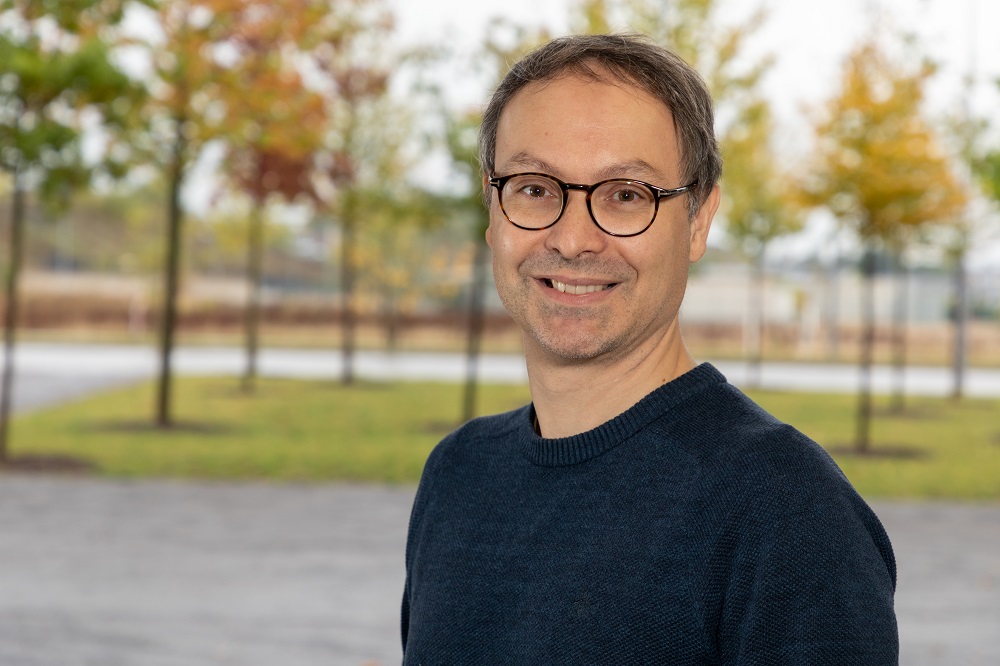Dr. Yannick Baraud joined the University of Luxembourg as the ERA-Chair holder of the SanDAL project, the multidisciplinary ERA Chair in Mathematical Statistics and Data Science (MS&DS), funded by the European Commission Horizon 2020 research and innovation programme. The SanDAL project focuses on boosting the research excellence of the university’s Mathematics Research Unit in two sub-topics: High-Dimensional Data Analysis and New Mathematical Tools for Contemporary Statistics.
Here, Dr. Baraud shares his perspective regarding the complex and dynamic field of data science.
Welcome to the SanDAL project at the University of Luxembourg!
1. What attracted you to the position at the university?
Dr. Baraud: The University of Luxembourg is a young and growing university which, in only few years, has reached very high standards of research. I have seen that very talented mathematicians, in probability and geometry for example, have recently joined the university. Working here gives me the feeling to be part of a new and exciting scientific adventure.
2. What do you think is the most interesting part of leading the SanDAL project?
Dr. Baraud: The SanDAL project has given me the opportunity to create a team of Statisticians who will work with me on problems that have been challenging me over the last eight years! One of these problems is that of designing robust procedures in Statistics. Many estimation procedures in Statistics, Machine Learning and Artificial Intelligence, unfortunately, suffer from a lack of robustness, which means that they perform poorly when the data set contains outliers, that is, when one or more data that have been erroneously sampled. Finding robust alternatives is a challenging task!
3. What is your research background and expertise in the field of MS&DS?
Dr. Baraud: I want to draw pieces of information about a complex phenomenon on the basis of its observation and the choice of a statistical model. My area of expertise includes estimation in parametric and non-parametric models, hypothesis testing and robustness mainly when the observed data are independent. In many cases, modelling a complex phenomenon by a single statistical model is too naive and it is wiser to consider a collection of candidate ones with the hope that at least one of these models provides a reasonable approximation of the phenomenon we are interested in. Finding from the data the best model among a collection is known as the model selection problem. I am also an expert of this kind of problems.
4. What are the most useful applications which would come from this scientific domain?
Dr. Baraud: When one speaks of useful applications, one usually thinks of a specific application in biology, medicine, or improving the performance of a device like a smartphone for example. In mathematics, we try to develop generic tools which can be used to solve a large number of problems simultaneously not a specific one. A mathematical tool becomes useful in medicine if it used by a physician or a biologist. This supposes that the physician has expressed his or her interest for the tool which can then be translated into a code on a computer, which is not so easy in general. As you see, there is still some way to go from the mathematical result to the practical applications and for the time being the results we have obtained are too recent to speculate on their applications in a specific area. Nevertheless, building collaborations with physicians, biologists or economists is definitely something I have in mind.
5. What advice would you give to young researchers or students who are interested in furthering their careers in this field?
Dr. Baraud : I definitely do not like to give advice. I have received many myself and followed little. I think it is important for a scientist to listen to others but also to question and develop his or her own thoughts. Nevertheless, what I can say to young researchers or students is that being a mathematician has been for me a great source of joy not only because I like doing mathematics but also because it has given me the opportunity to cross inventive and talented researchers and the students.
6. Why is important for a wider audience (scientific, industry, general) to understand the significance and relevance of MS&DS?
Dr. Baraud : We are living in a world which faces many complex problems. Solutions are definitely hard to find. MS&DS will not solve them all but at least does it provide some tools to understand better some specific aspects of complex phenomenon just by observing. Not only can we learn but also can we make a machine “learn” (for the purpose of reproducing some tasks automatically). MS&DS brings new tools for drawing the available information from what we observe, giving thus a scientific basis on which taking our future decisions.
For more information regarding Dr. Yannick’s work, please visit:
http://math.uni.lu/baraud/Home.html
https://wwwen.uni.lu/research/fstm/dmath/people/yannick_baraud
Please continue to follow the progress and achievements of the SanDAL project at: sandal.uni.lu

